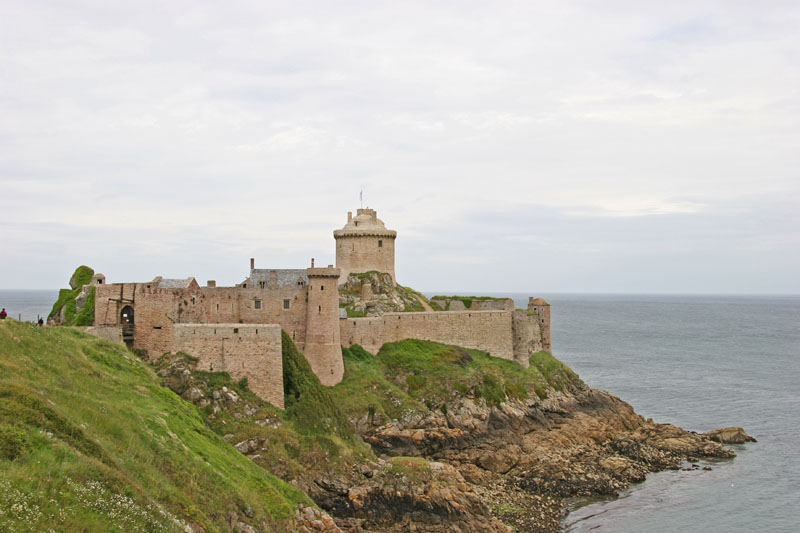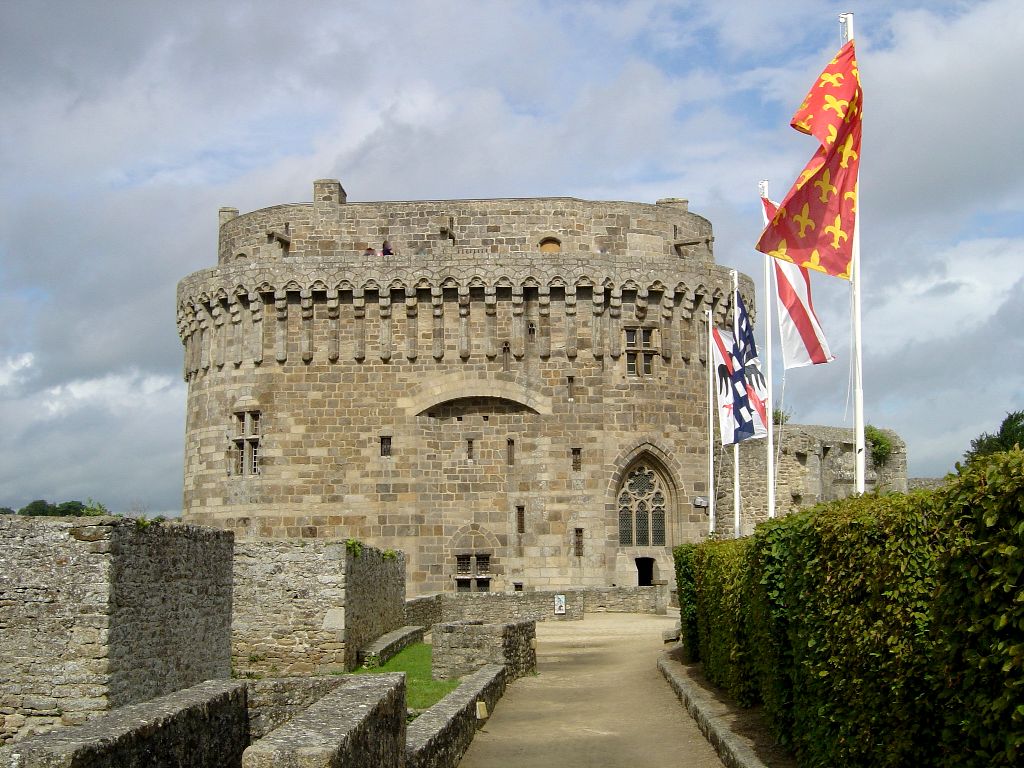|
List Of Châteaux In Brittany
This article is a list of châteaux in Brittany, France. Côtes-d'Armor ''Former Duchy of Brittany'', Departement 22. *Château de Bienassis, 15th and 16th centuries at Erquy. Park and gardens. Classified as a Historic Monument. * Château de Caradeuc, at Plouasne * Château de La Caunelaye, at Corseul * Château de Coat-an-noz, at Belle-Isle-en-Terre * Château de Costaérès, at Trégastel * Château de Dinan, at Dinan. Musée. Classified as a Historic Monument. *Fort-la-Latte, at Plévenon, Mediaeval fort rebuilt by Vauban. Classified as a Historic Monument. * Château de Guingamp, at Guingamp * Château de La Guyomarais, at Saint-Denoual * Château de Hac, at Quiou. Classified as a Historic Monument. * Château de la Hunaudaye, at Plédéliac. Classified as a Historic Monument. * Château de Lorge, at L'Hermitage-Lorge. Listed as an Historic Monument. * Château de Montafilant, 13th century, at Corseul. Listed as an Historic Monument. * Château de Monterf ... [...More Info...] [...Related Items...] OR: [Wikipedia] [Google] [Baidu] |
Château
A château (; plural: châteaux) is a manor house or residence of the lord of the manor, or a fine country house of nobility or gentry, with or without fortifications, originally, and still most frequently, in French-speaking regions. Nowadays a ''château'' may be any stately residence built in a French style; the term is additionally often used for a winegrower's estate, especially in the Bordeaux region of France. Definition The word château is a French word that has entered the English language, where its meaning is more specific than it is in French. The French word ''château'' denotes buildings as diverse as a medieval fortress, a Renaissance palace and a fine 19th-century country house. Care should therefore be taken when translating the French word ''château'' into English, noting the nature of the building in question. Most French châteaux are "palaces" or fine "country houses" rather than "castles", and for these, the word "château" is appropriate in English. ... [...More Info...] [...Related Items...] OR: [Wikipedia] [Google] [Baidu] |
Corseul
Corseul (; ; Gallo: ''Corsoeut'') is a commune in the Côtes-d'Armor department of Brittany in northwestern France. The town was a major Roman town and contains Roman ruins. The town hall contains a small archaeological museum. History Corseul was called ''Fanum Martis'' ("Temple of Mars") in Latin and was the capital of the Gallo-Roman province of Coriosolites. It was founded in 10 BC. In the 3rd and 4th centuries, like many other cities, Fanum Martis was renamed for its people, the Curiosolitae. This name change occurred as the Roman Empire weakened and paralleled a revival of the ancient Gallic gods in local religious sculptures and dedicatory inscriptions. Some 1.5 kilometres to the southeast, at Haut-Bécherel, stand the prominent remains of an extensive Roman temple sanctuary, built at the time of Nero and Vespasian.Louis Gouipeau, "La datation archéomagnétique du temple du Haut-Bécherel à Corseul", ''Revue Archéologique de l'Ouest'' 1984.1:pp84-88. Population Inh ... [...More Info...] [...Related Items...] OR: [Wikipedia] [Google] [Baidu] |
Château De Hac
A château (; plural: châteaux) is a manor house or residence of the lord of the manor, or a fine country house of nobility or gentry, with or without fortifications, originally, and still most frequently, in French-speaking regions. Nowadays a ''château'' may be any stately residence built in a French style; the term is additionally often used for a winegrower's estate, especially in the Bordeaux region of France. Definition The word château is a French word that has entered the English language, where its meaning is more specific than it is in French. The French word ''château'' denotes buildings as diverse as a medieval fortress, a Renaissance palace and a fine 19th-century country house. Care should therefore be taken when translating the French word ''château'' into English, noting the nature of the building in question. Most French châteaux are "palaces" or fine "country houses" rather than "castles", and for these, the word "château" is appropriate in English. ... [...More Info...] [...Related Items...] OR: [Wikipedia] [Google] [Baidu] |
Saint-Denoual
Saint-Denoual (; br, Sant-Denwal) is a commune in the Côtes-d'Armor department of Brittany in northwestern France. Population Inhabitants of Saint-Denoual are called ''guinguenoualais'' in French. See also *Communes of the Côtes-d'Armor department The following is a list of the 348 Communes of France, communes of the Côtes-d'Armor Departments of France, department of France. The communes cooperate in the following Communes of France#Intercommunality, intercommunalities (as of 2020): References External links * Communes of Côtes-d'Armor {{CôtesArmor-geo-stub ...[...More Info...] [...Related Items...] OR: [Wikipedia] [Google] [Baidu] |
Château De La Guyomarais
A château (; plural: châteaux) is a manor house or residence of the lord of the manor, or a fine country house of nobility or gentry, with or without fortifications, originally, and still most frequently, in French-speaking regions. Nowadays a ''château'' may be any stately residence built in a French style; the term is additionally often used for a winegrower's estate, especially in the Bordeaux region of France. Definition The word château is a French word that has entered the English language, where its meaning is more specific than it is in French. The French word ''château'' denotes buildings as diverse as a medieval fortress, a Renaissance palace and a fine 19th-century country house. Care should therefore be taken when translating the French word ''château'' into English, noting the nature of the building in question. Most French châteaux are "palaces" or fine "country houses" rather than "castles", and for these, the word "château" is appropriate in English. ... [...More Info...] [...Related Items...] OR: [Wikipedia] [Google] [Baidu] |
Guingamp
Guingamp (; ) is a commune in the Côtes-d'Armor department in Brittany in northwestern France. With a population of 6,895 as of 2017, Guingamp is one of the smallest towns in Europe to have a top-tier professional football team: En Avant Guingamp, which played in Ligue 1 from 2013 until 2019. Guingamp station is served by high speed trains to Brest, Rennes and Paris, and regional trains to Brest, Lannion, Carhaix, Paimpol and Rennes. History The town has the remains of three successive castles, the last of which was razed to the ground by the order of Cardinal Richelieu. They were reduced to three towers. Vincent de Bourbon, great-grandson of Louis XIV, was Count of Guingamp from 1750 until his death in 1752. Population Sports The city is well-known for its professional football team, En Avant de Guingamp, which won the Coupe de France against Rennes in the 2008–09 season while it was still part of Ligue 2. The team returned to Ligue 1 for the 2013–14 season for the f ... [...More Info...] [...Related Items...] OR: [Wikipedia] [Google] [Baidu] |
Château De Guingamp
A château (; plural: châteaux) is a manor house or residence of the lord of the manor, or a fine country house of nobility or gentry, with or without fortifications, originally, and still most frequently, in French-speaking regions. Nowadays a ''château'' may be any stately residence built in a French style; the term is additionally often used for a winegrower's estate, especially in the Bordeaux region of France. Definition The word château is a French word that has entered the English language, where its meaning is more specific than it is in French. The French word ''château'' denotes buildings as diverse as a medieval fortress, a Renaissance palace and a fine 19th-century country house. Care should therefore be taken when translating the French word ''château'' into English, noting the nature of the building in question. Most French châteaux are "palaces" or fine "country houses" rather than "castles", and for these, the word "château" is appropriate in English. ... [...More Info...] [...Related Items...] OR: [Wikipedia] [Google] [Baidu] |
Plévenon
* Cap Fréhel
Plévenon (; ) is a commune in the Côtes-d'Armor department of Brittany in northwestern France. On January 1, 1973, Plévenon was merged with the commune of Pléherel, after which the new commune was called Fréhel. However, Plévenon was re-established as a separate commune in October 2004. Population Inhabitants of Plévenon are called ''Plévennais'' in French. See also * Communes of the Côtes-d'Armor department The following is a list of the 348 Communes of France, communes of the Côtes-d'Armor Departments of France, department of France. The communes cooperate in the following Communes of France#Intercommunality, intercommunalities (as of 2020): References Communes of Côtes-d'Armor {{CôtesArm ...[...More Info...] [...Related Items...] OR: [Wikipedia] [Google] [Baidu] |
Dinan
Dinan (; ) is a walled Breton town and a commune in the Côtes-d'Armor department in northwestern France. On 1 January 2018, the former commune of Léhon was merged into Dinan. Geography Its geographical setting is exceptional. Instead of nestling on the valley floor like Morlaix, most urban development has been on the hillside overlooking the river Rance. The area alongside the river is known as the "port of Dinan", and is connected to the town by steep streets: Rue Jerzual and its continuation outside the city walls, the Rue Petit Fort. The Rance has moderate turbidity and its brownish water is somewhat low in velocity due to the very low gradient of the watercourse; pH levels have been measured at a slightly basic 8.13 within the city, and electrical conductivity of the waters has tested at 33 micro-siemens per centimetre. In the centre of Dinan, the Rance's summer flows are typically low, in the range of . For many years, the bridge over the river Rance at Dinan was t ... [...More Info...] [...Related Items...] OR: [Wikipedia] [Google] [Baidu] |
Château De Dinan
The Château de Dinan consists of a keep, in the town of Dinan, in the Côtes-d'Armor ''département'' of the Brittany region of France. The keep and the gate are part of the of medieval ramparts which still surround the old town. It is called ''Donjon de la duchesse Anne'' (Keep of the Duchess Anne), and stands 111 feet (34m) high near the Saint Louis gate. John V, Duke of Brittany built the keep in 1382–1383. The keep is formed by a union of two tall circular towers; a moat and drawbridge divides the keep from the outside of the ramparts as well as from the inside of the city, providing a stronghold both against outsiders and from the townspeople themselves. Extensive machicolations overhang the wall head providing defensive coverage of the base of the tower. The castle was listed for protection as a ''monument historique'' in 1886. It is owned by the ''commune'' and houses the local museum. See also * List of castles in France This is a list of castles in France, ar ... [...More Info...] [...Related Items...] OR: [Wikipedia] [Google] [Baidu] |
Trégastel
Trégastel (; ) is a commune in the Côtes-d'Armor department of the region of Brittany in northwestern France. Trégastel is situated between Perros-Guirec and Pleumeur-Bodou. Lannion is 10 kilometres away. Population Inhabitants of Trégastel are called ''trégastellois'' in French. Breton language The municipality launched a linguistic plan through Ya d'ar brezhoneg in February 2008. In 2008, 16.5% of primary school children attended bilingual schools. ''Ofis ar Brezhoneg''''Enseignement bilingue'' International relations The official sister cities of Trégastel are: * Foz, Spain, since 2003 * Koussané, Mali, since 2004 Religious monuments * St Laurent Church in the bourg * Ste Anne des rochers chapel * St Golgon chapel The Costaérès castle In 1892, Bruno Abakanowicz bought a small island called ''Costaérès'' in Trégastel, where by 1896 he had erected a neo-Gothic manor. Marine aquarium of Trégastel Since 1967, Trégastel has been home to a marine aquarium, bu ... [...More Info...] [...Related Items...] OR: [Wikipedia] [Google] [Baidu] |


.jpg)


